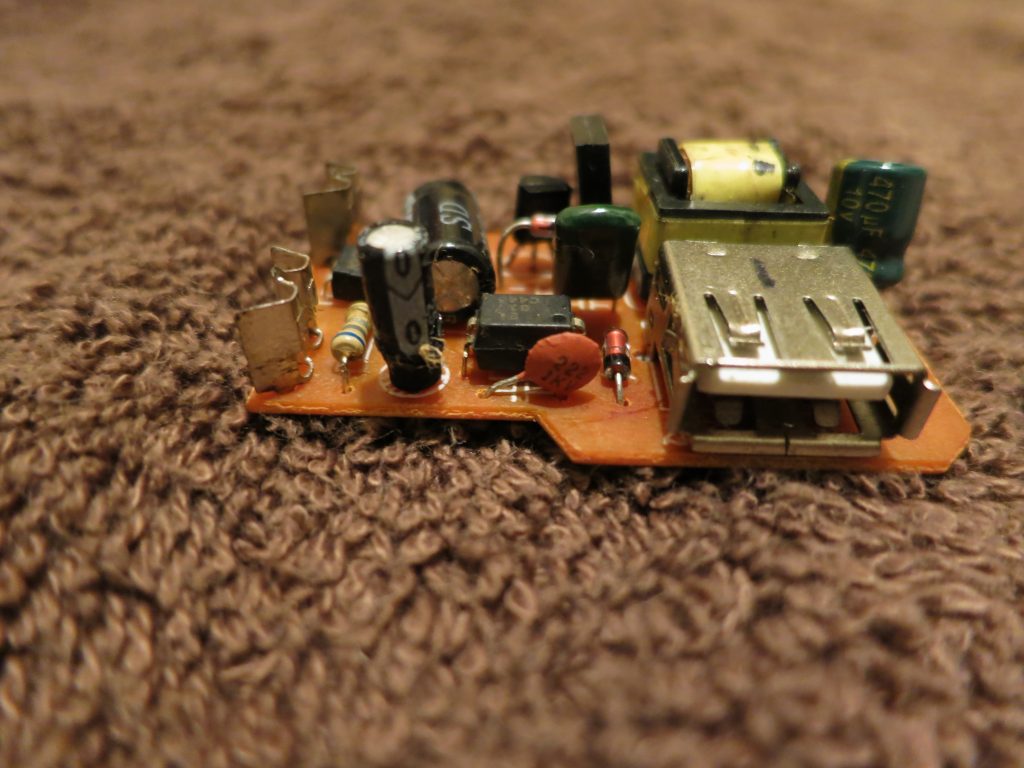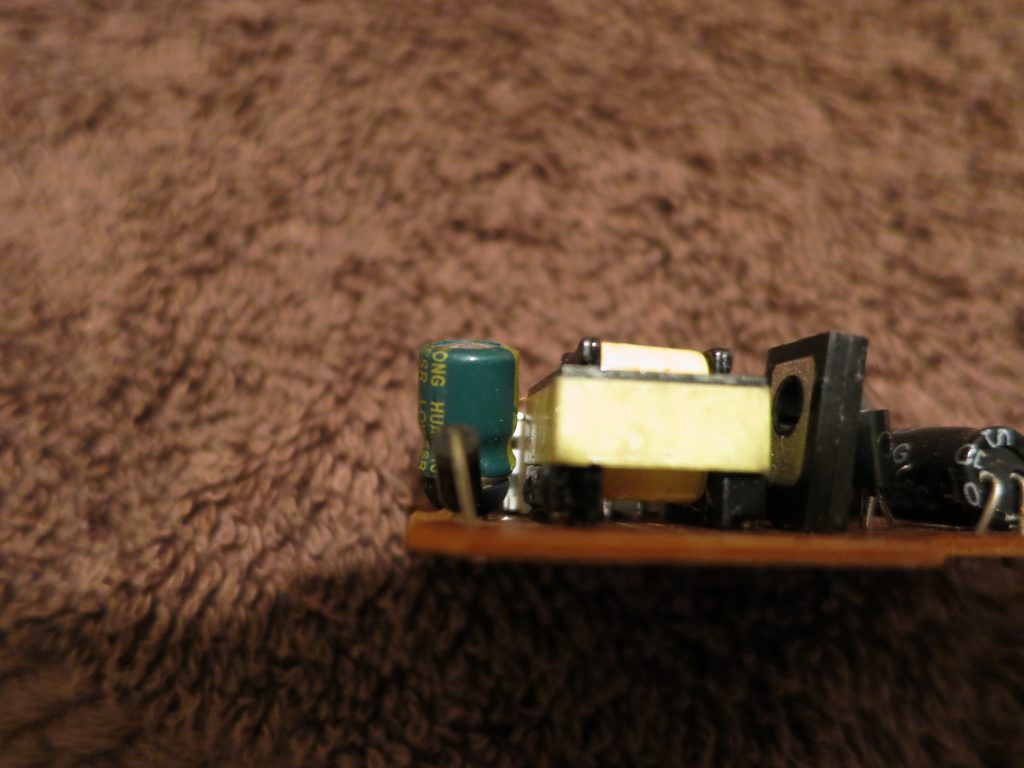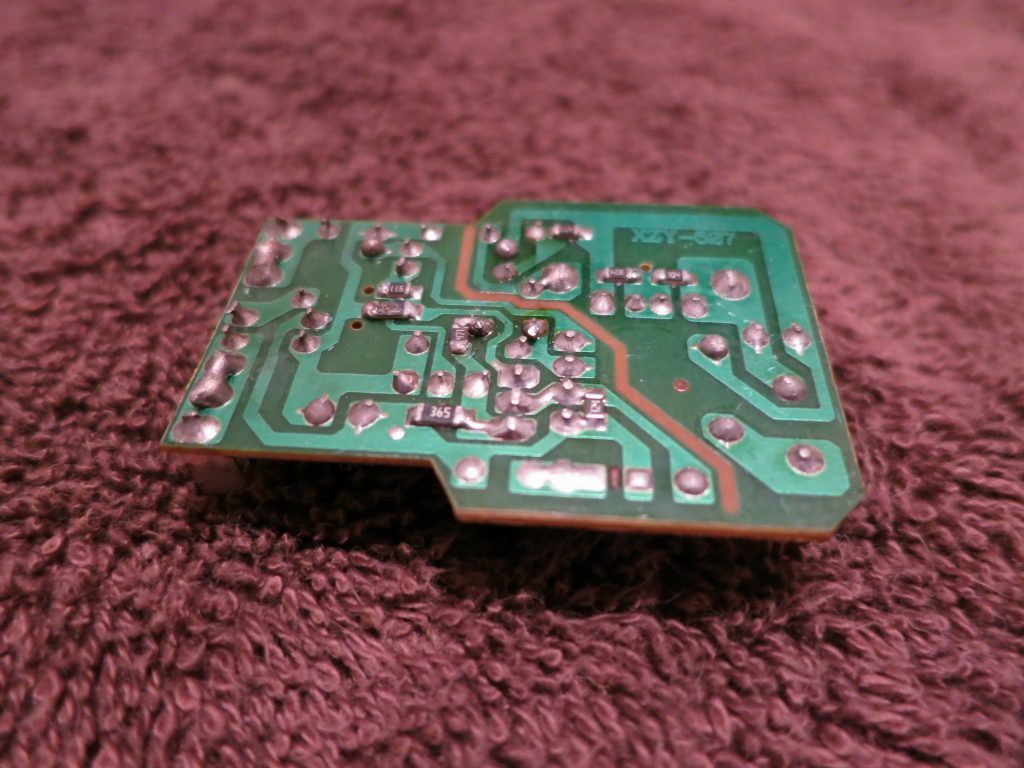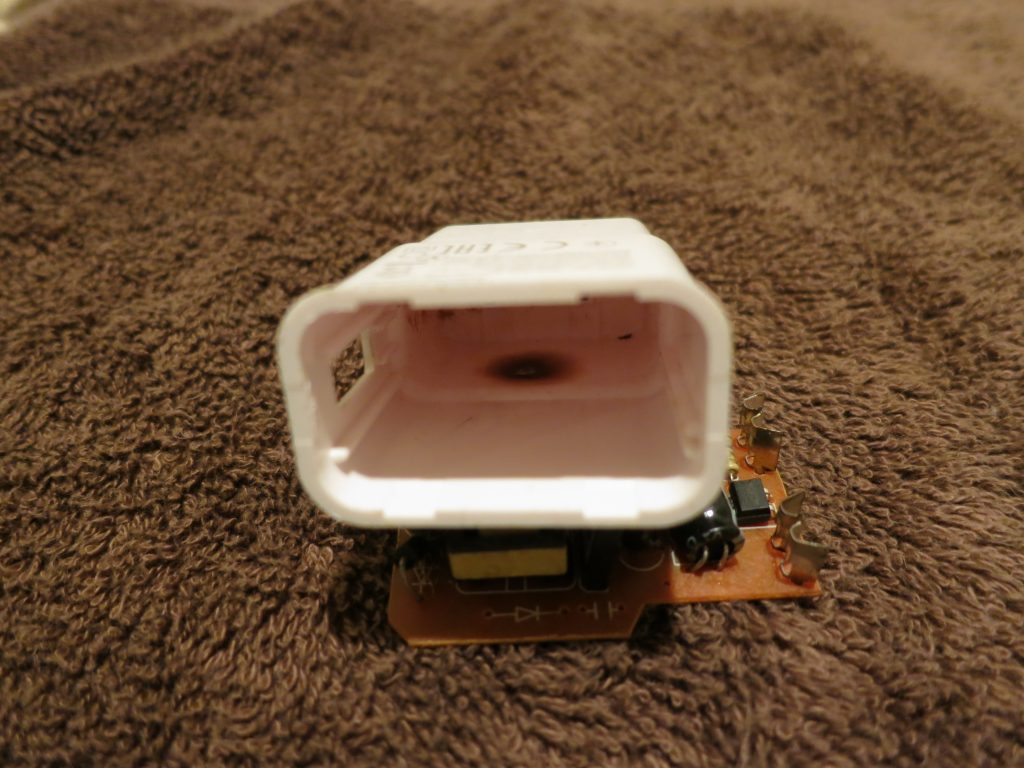Every few months there are stories of mobile phones and chargers catching fire, but it’s not often that a defective charger blows up while connected to a voltmeter.
This was a generic 2-amp charger that I received with a used phone at an independent cellphone shop. I had it for over a year. Recently, I used it to charge an old Galaxy S3 which I was using as a music player. After a while, I found the phone hot to the touch and not charging. I tried another charger, and no luck – the phone would not charge.
Fortunately it was an old inactive phone, not the one I use every day. But did the phone just fail, or did the charger destroy it? Today I decided to find out. I connected the charger’s output to a Fluke voltmeter set on DC volts, watched the display, and plugged it in.
The meter takes about half a second to settle down. It showed 44 volts for less than a second. Before I could unplug the charger, there was a blue flash and a pop from inside it. The charger had lost regulation, destroyed my phone, and could have started a fire.

How is that even possible? How can a device designed to put out 5 volts go all the way up to 44 volts? Shouldn’t the transformer step-down ratio be too high to allow that?
As it turns out, modern cell phone chargers do not use a regular transformer, or even a “forward converter” switching power supply. Since they are supposed to work efficiently from 100 to 240 volts input, they use something called a “flyback converter” which does not have a fixed input to output ratio. Unlike an old-fashioned transformer, it can “go wild.”

The way this works is, a transistor turns on and generates a magnetic field in the primary of the transformer. When the control IC turns off the transistor, the magnetic field collapses and dumps its energy, through the secondary winding and a diode, into the output capacitor. Operating on 240 volts, the controller just turns off the transistor sooner than on 120 volts.

If the regulation fails, the controller will leave the transistor on too long during each cycle. The output capacitor will just keep charging up, until either the load draws enough current to limit the voltage, or a component fails. This “flyback” design is inherently unsafe unless it has an over-voltage shutdown circuit – which this cheap no-name charger did not have.
With a phone attached to the charger, the phone’s input circuit failed, got hot, and could have caught fire. Without a load, the voltage kept rising until several components in the charger blew up.
